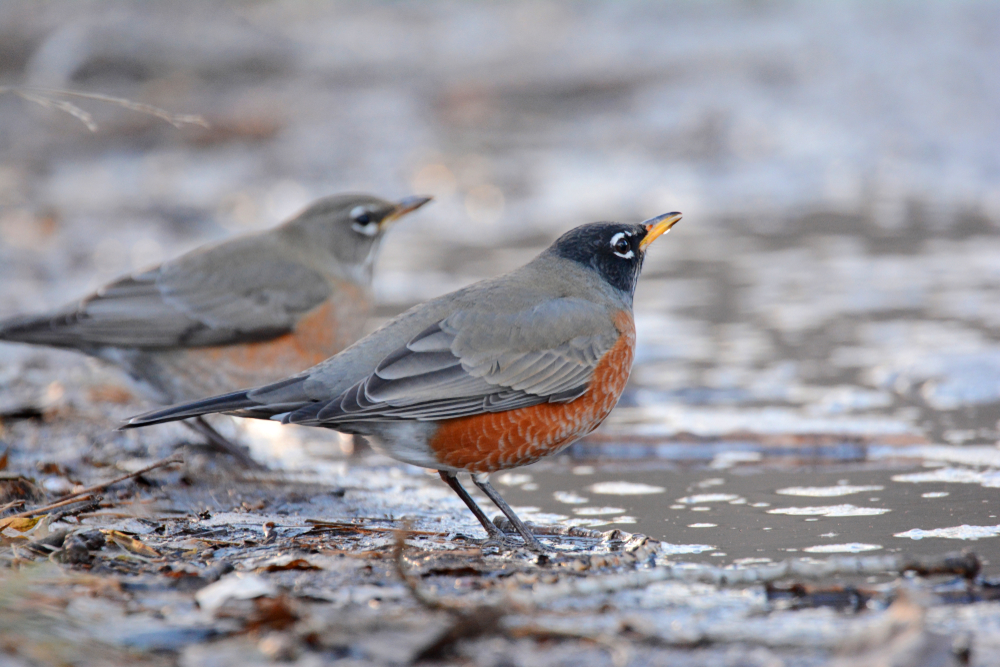American Robin, Turdus migratorius
Bill Rowe
The American Robin is one of our best-known birds, as well it should be: it is a common nesting bird in 49 states out of 50 (sorry, Hawaii) and all the Canadian provinces. It occurs from the Arctic to the Deep South, from the flattest plains to timberline in the mountains, and from the wilderness to your backyard. It is the epitome of a successful, adaptable species. Its diet varies to suit the season, from mainly worms and other invertebrates in summer to fruits in winter, and its social habits change too, from single pairs on their nesting territories to, months later, large flocks that may move all around in search of food. In fact, winter aggregations of robins can reach huge proportions, occasionally even into the millions. They may not be on your lawn, but they are out there! The robin’s genus (Turdus, Latin for “thrush”) is found world-wide, with many species on six continents, while the meaning of its specific name migratorius should be pretty obvious—except that robins migrate south only in portions of their range (see Status, below). That a robin is a thrush becomes apparent when you look at the juveniles, all spotted below like most of our other thrushes.
IDENTIFICATION: Robins are easy, with their rich red-orange underparts and yellow bill; both sexes have a gray back and wings, with matching gray on the female’s head and contrasting blackish on the male’s. Other points that sometimes help are the white spots at the corners of the tail as a robin flies away from you, and the tight flicking wingbeats of robins flying overhead. And by paying close attention to the robins in your neighborhood, you can learn to recognize their wide vocabulary of call-notes, in addition to the caroled phrases of their song.
ST. LOUIS STATUS: Present all year, and especially common as a nesting bird, spring and summer. Many robins migrate out of the northern parts of their range for the winter, including parts of Missouri, but other robins migrate into the state, so it is quite unclear how many of the robins seen in the winter at St. Louis may have simply stuck around from summer. At any rate, they may be more local and rural in winter, but still present.
Learn more and listen to the calls of American Robins here.




